How decision trees can help you select the appropriate statistical analysis
Decision trees are handy tools that can take some of the stress out of identifying the appropriate analysis to conduct to address your research questions. A decision tree is a visual organization tool that outlines the type of data necessary for a variety of statistical analyses. It is important to note that decision trees, such as the one included in our Intellectus Statistics software, cover the more common and basic statistical analyses (e.g., t-tests, ANOVAs, and regressions) and may not be appropriate for more sophisticated analyses.
For example, consider the following research question: Are there differences in starting salary for executives in Fortune 500 companies by highest degree earned and previous position? In this example, highest degree earned is a categorical variable with categories of bachelor, master, and doctoral. Previous position is a categorical variable with categories of entry level, mid-level management, and high-level management. Both highest degree earned and previous position are treated as categorical independent variables. Starting salary is operationalized as the dollar amount new hires accepted upon beginning employment with the company. Starting salary is treated as a continuous dependent variable.

Discover How We Assist to Edit Your Dissertation Chapters
Aligning theoretical framework, gathering articles, synthesizing gaps, articulating a clear methodology and data plan, and writing about the theoretical and practical implications of your research are part of our comprehensive dissertation editing services.
- Bring dissertation editing expertise to chapters 1-5 in timely manner.
- Track all changes, then work with you to bring about scholarly writing.
- Ongoing support to address committee feedback, reducing revisions.
Following the Intellectus Statistics decision tree, for the first decision you would select I want to explore differences between groups.
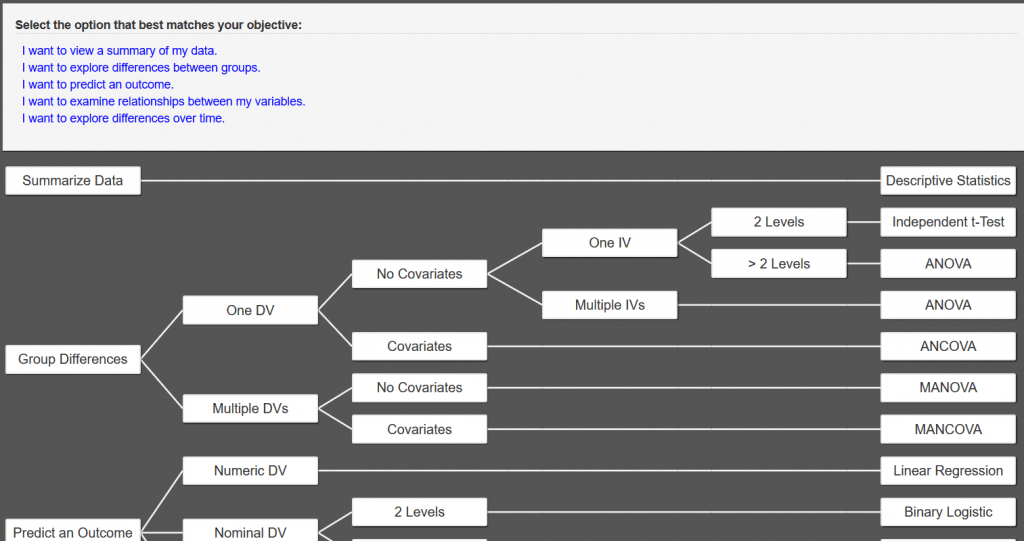
The next question asks if you have more than one dependent variable. Because our only dependent variable is starting salary, we would select No.
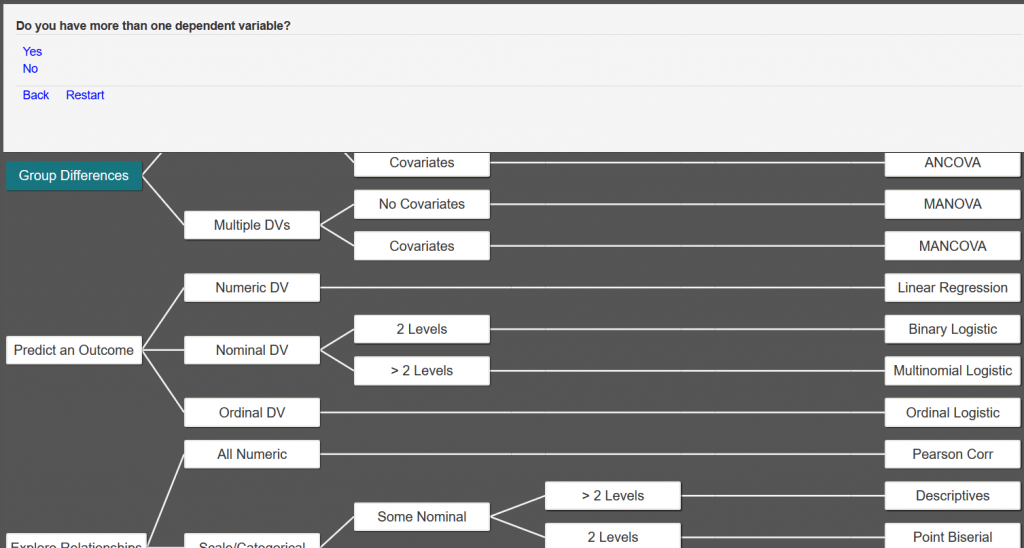
For the next question, we have no covariates, so we would answer No.
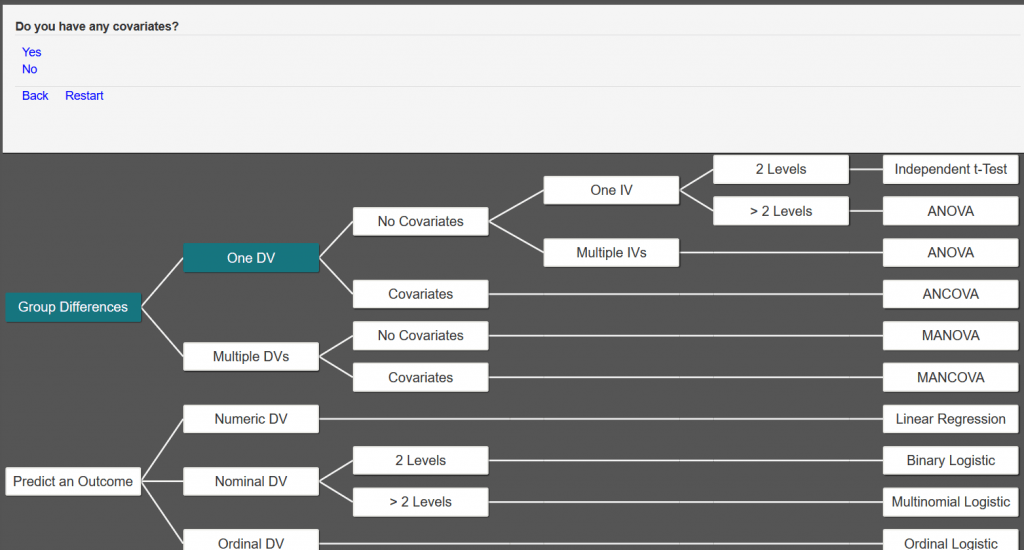
Next, we are asked if we have more than one independent variable. Because we have two independent variables (highest degree earned and previous position), we select Yes.
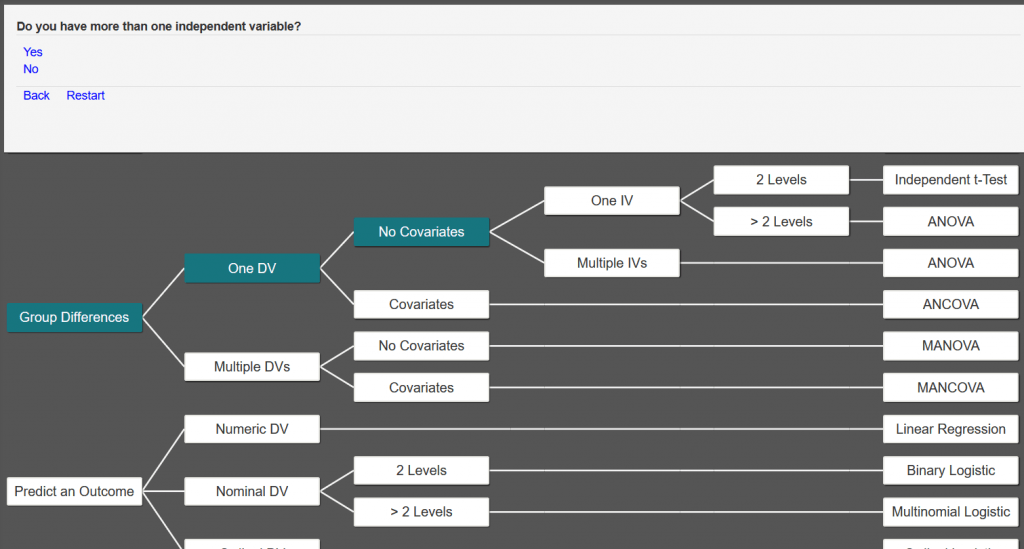
At this point, the decision tree has reached the conclusion that we should conduct an ANOVA.
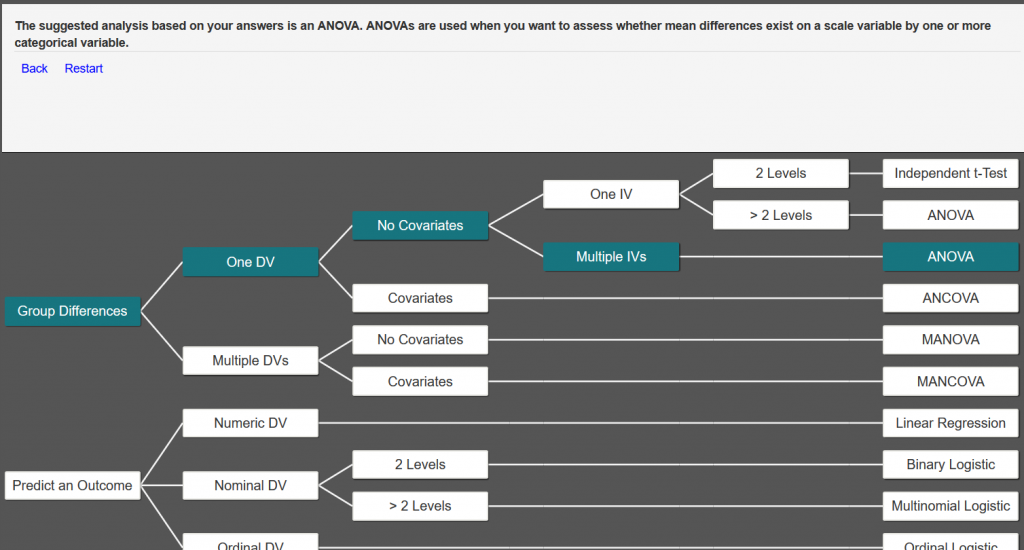
As we see from this example, a decision tree such as the one included with Intellectus Statistics can help simplify your decision-making. In addition to conducting analyses, our software provides tools such as decision tree, data analysis plan templates, and power analyses templates to help you plan and justify your analyses, as well as determine the number of participants required for your planned analyses. For assistance with our software and a variety of other dissertation resources, please contact us!
Create your free account and start using the Intellectus Statistics interactive decision tree now!